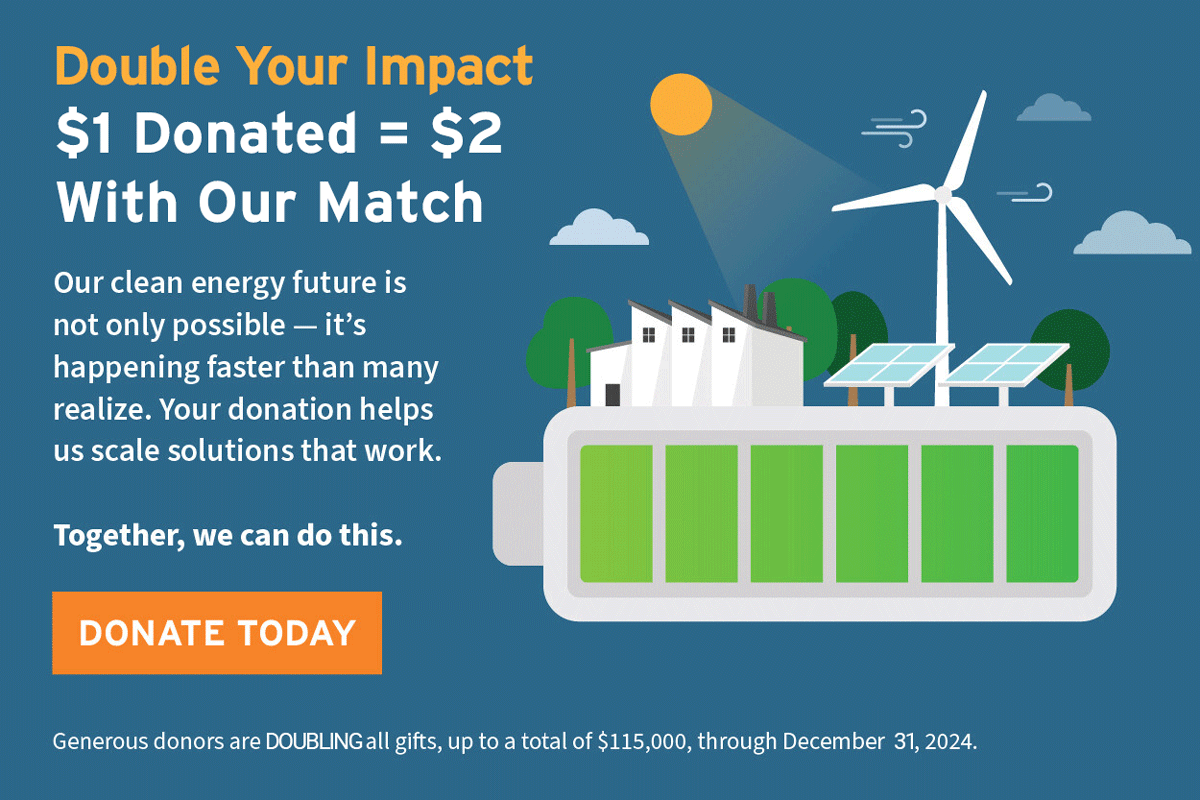The Power of Communications
We’re working to expand our audiences and multiply our impact by growing what we can do and investing in independent climate journalism.
This is an excerpt from RMI's 2022 Annual Report.
Read the full report.
At Climate Week in New York City in September 2022, the former executive secretary to the United Nations Framework on Climate Change Christiana Figueres posed a simple question to the crowd. She asked: “Who believes we can reach our target of halving climate pollution by 2030, and achieving net zero by 2050?” In an audience packed with climate-focused professionals, not a single hand went up. The lackluster response caused Figueres to post on Twitter that “This is the moment for strategic communications and political economy building.”
At RMI, where we focus on developing and scaling the solutions to climate change, we couldn’t agree more. We know solutions exist that are affordable and achievable. For their adoption, we are certain that communication is essential with an increasingly diverse and international audience.
Building on our deep, historic connection with expert audiences in science and energy, we increasingly connect with business and finance leaders, as well as policymakers from town halls to global capitals. And as questions about the climate and the energy transition continue to multiply, a new generation of climate-curious explorers is finding their way to our content, experts, and analysis.
That’s why, over the past year, RMI has made a strategic pivot to invest in the power of communications to boost our influence and multiply our impact: by growing our in-house communications team and by supporting an independent journalism nonprofit focused on climate solutions.
RMI Communications: Applying an audience-first approach to delivering climate insights
The fact-based data-driven approach that has characterized RMI’s success for the past 40 years is mirrored in our communications strategy.
More than ever, we are using data and insights to understand who engages with our content on social media, visits our website, discovers our work on search engines, and signs up for our newsletters.
From this data, we’re learning who’s consuming our work, where, for how long, and more — all key variables to guide decisions about how we can better package and deliver our research and analysis.
In unearthing this audience data, we’re discovering that the tactics of the past are not necessarily the best methods for reaching audiences today and into the future, particularly as the digital media landscape continues to evolve. Users of our website, rmi.org, have surged by 40 percent in the year to July 2022. Here are just a few of the ways we’re drawing new audiences to RMI, to extend our reach and increase our impact:
- Working with a coalition of NGO communicators to conduct research on messaging so that we can combine forces and target the most effective messages to each audience.
- Curating more accessible story forms including Clean Energy 101, which breaks down the basics of climate topics; RMI Reality Check, which uses our analysis to counteract the prevailing myths blocking climate action; and Climate Graph, focused on displaying key data about climate.
- Rolling out a series of topic-based websites such as Inside Amory’s Brain and Energy Security Nexus. Topic-focused sites like these curate content to offer readers a focus on compelling issues and ideas.
As ever, we continue to boost the visibility of RMI’s experts and their work in local, national, and global outlets.
- For example, a bar chart summarizing the benefits of the Inflation Reduction Act in a simple way was featured in The Atlantic, picked up by Reuters, and spread around the world.
- RMI has been mentioned in over 25,000 articles globally through three quarters of 2022, a 26 percent increase on 2021’s full-year total, and our coverage is more international than ever.
- We are expanding social media in the Caribbean, Africa, and Pacific Islands because we know that is how they get their information, and they are likely the next movers on climate action.
- RMI’s social reach — including the dozens of Facebook, LinkedIn, and Twitter accounts operated by our programs and the institute — has grown by 17 percent to almost 150,000 over the past year.
Examples like these show that now, more than ever, RMI insights are contributing to — and shifting — the global conversation on climate change and the energy transition.
Canary Media: Independent reporting on the clean energy transition
Launched in April 2021 with RMI’s support, Canary Media is an independent, nonprofit news outlet that focuses on the how of the energy transition. Our newsroom is led by experienced journalists who have been embedded in the climate and energy beat for more than 20 years.
Canary’s work is free for anyone to access. Its rapidly growing audience includes many US senators, congresspeople, and senior executives. Major news outlets such as The New York Times, Los Angeles Times, Axios, and Vox have cited and shared Canary’s wide-ranging and diverse coverage over the past 18 months.
This includes deep-dive reporting on the under-covered climate components of the Inflation Reduction Act, multimedia coverage of Hawaii’s move to quit burning coal, bilingual on-the-ground reporting on Puerto Ricans embracing solar power, and much more.
In addition, Canary Media co-produces two award-winning climate podcasts, The Carbon Copy and Catalyst with Shayle Kann. These weekly shows tell the stories behind today’s biggest climate policies, technologies, and markets.
In the coming months, with increased philanthropic support, Canary will expand its reporting and reach, helping strengthen and speed the clean energy transition.
We plan to bolster our digital channels; hire reporters dedicated to vehicle electrification, deployment of the Inflation Reduction Act, zero-carbon buildings, and more.
We also aim to go global with journalists covering the energy transition in Africa, Asia, Europe, and South America, all of which are crucial battlegrounds in the fight against climate change.
